
By William H. Thiesen, Historian, Coast Guard Atlantic Area
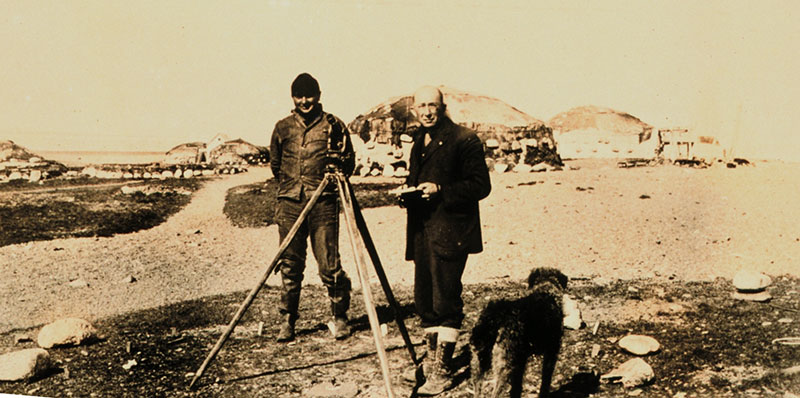
Photo of U.S. Coast Survey field party in Siberia transported by Cutter Bear. Image courtesy of NOAA. Download larger version (jpg, 1.1 MB).
Hear the rattle of the windlass as our anchor comes aweigh,
We are bound to old Point Barrow and we make our start today,
Keep a tight hold on your dinner, for outside the South Wind blows,
And unless you’re a sailor, you’ll be throwing up your toes.
–Anonymous Bering Sea Patrol veteran
Revenue Cutter Bear served every year on the Bering Sea Patrol, which cutters had initiated in 1874. Each of the Bering Sea Patrols covered between 15,000 and 20,000 miles of cruising. Conditions on these patrols were harsh, dangerous, stressful and, at times, deadly (a fact demonstrated by Bear crewmembers buried in the Aleutian Islands). However, Bering Sea sailors experienced long periods of intense boredom punctuated by terrifying events.
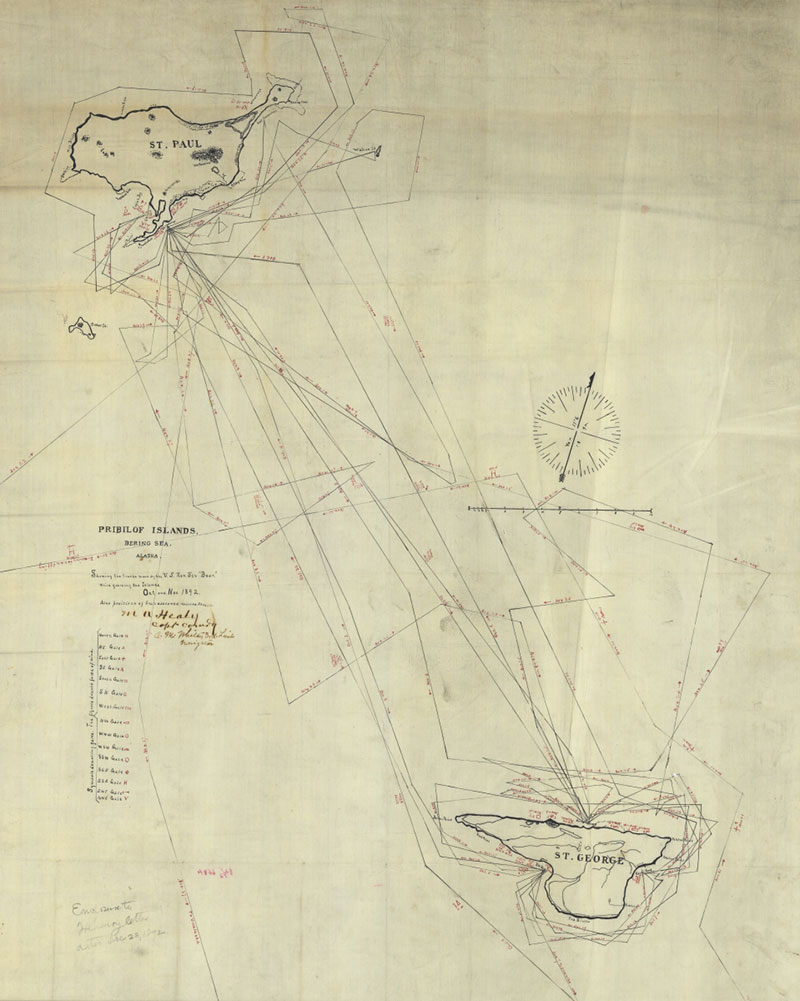
An 1892 chart of the Pribilof Islands, showing Bear’s cruising track lines and signed by Captain Michael Healy and his navigator. Image courtesy of NOAA. Download larger version (jpg, 785 KB).
When Alaska became a U.S. territory in 1867, the primary revenue cutter missions included supporting the U.S. Coast Survey and setting up a territorial government, as well as protecting endangered seal herds from poachers. Cutters patrolled the waters of the Pribilof Islands, seizing poaching vessels of all nationalities. Bear enforced seal hunting regulations into the early 1900s and, in 1892, it was on hand when military action nearly erupted between the United States and Great Britain over seizure of British sealing vessels.
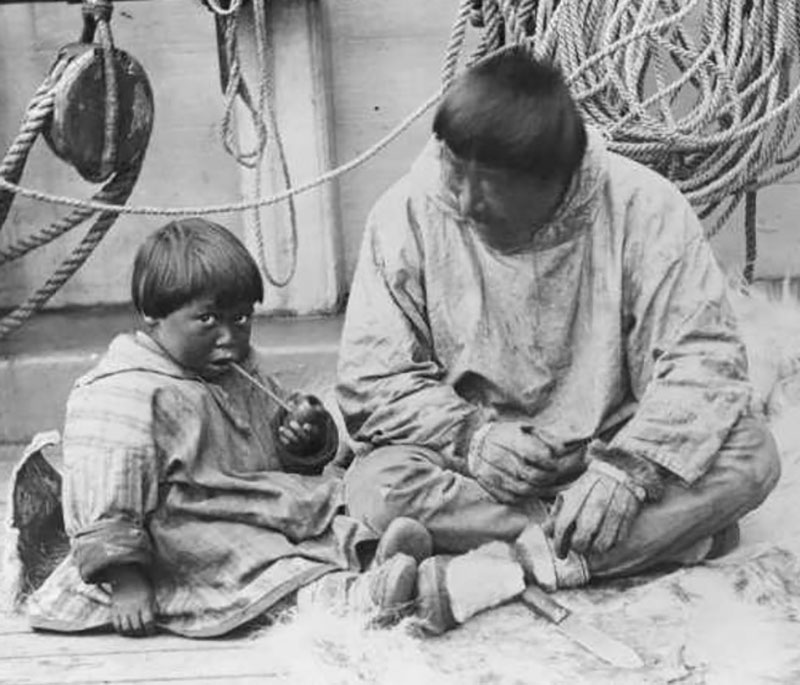
Native Alaskans on main deck of the Bear. Image courtesy of the U.S. Coast Guard. Download larger version (jpg, 184 KB).
For decades, neither roads nor railroads existed in Alaska, so cutters were the primary federal presence in the territory. Cutters had to adopt an exhaustive list of missions, becoming true interagency support vessels for Alaska. For example, on Captain Michael Healy’s 1891 cruise, the Bear secured witnesses for a murder case; ferried reindeer from Siberia to Alaska; transported Alaska’s governor on a tour of Alaska’s islands; shipped a U.S. Geological Survey team to Mount Saint Elias; carried lumber and supplies for school construction in remote locations and the Arctic; delivered teachers to their remote assignments; carried mail for the U.S. Postal Service; enforced seal hunting laws in the Pribilof Islands; supported a Coast & Geodetic Survey team; provided medical relief to native populations; served life-saving and rescue missions; and enforced federal law in its area of responsibility.
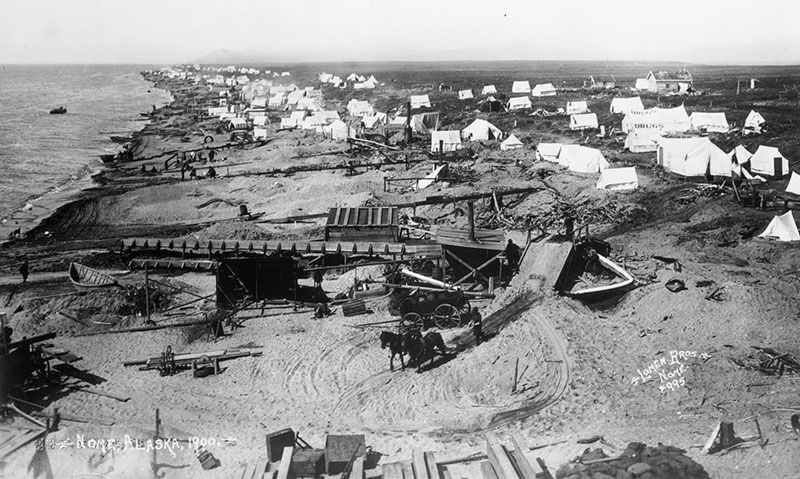
A 1900 photograph of Nome, Alaska, showing tents and mining equipment during the local gold rush. Image courtesy of the Library of Congress. Download larger version (jpg, 664 KB).
Oversight of seal hunting laws proved the cutters’ law enforcement value and, in 1908, the Revenue Cutter Service took responsibility for enforcing all Alaskan game laws. Later in its Alaskan career, Bear also supported the regular “Court Cruise,” in which it transported judges, public defenders, court clerks, and marshals for criminal cases located around Alaska.
Bear’s humanitarian support of Alaska not only included better nutrition for native communities, the cutter also interdicted illegal liquor used to exploit native people in the territory. Native people referred to the Bear as “Omiak puck pechuck tonika” or “the fire canoe with no whiskey.” Bear’s humanitarian support of Alaska was assistance on a sweeping scale, but the cutter also aided individuals in need of assistance. As Revenue Cutter Service historian, Stephen Evans, wrote “In assisting private persons, neither class, race, nor creed made any difference to the Bear; degree of stress was the sole controlling factor.”
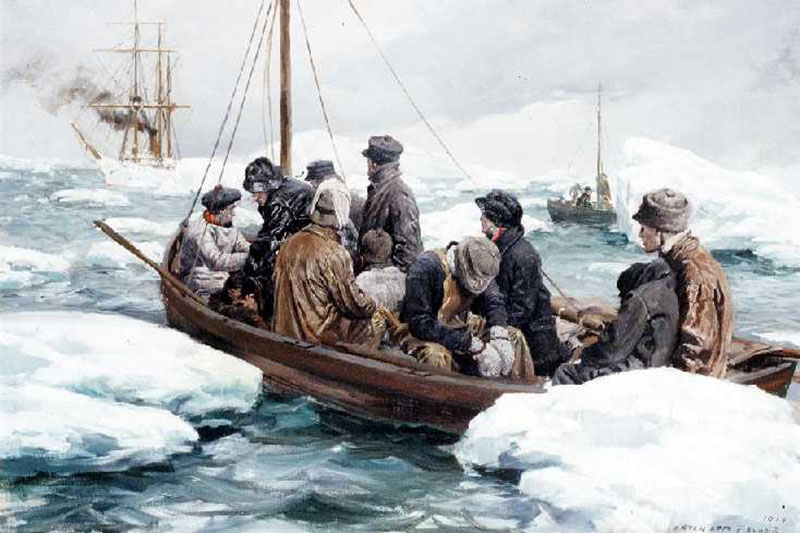
A painting showing the Bear saving whalers drifting in pack ice after losing their ship. Image courtesy of the U.S. Coast Guard. Download larger version (jpg, 183 KB).